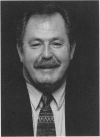Abstract
The Canadian Chiropractic Examining Board (CCEB) is now in its fortieth year of providing quality measurement and evaluation services to the chiropractic profession in Canada. Dr. James Langford and his wife Lorraine are to be acknowledged for their significant contribution in the early days of the organization. The CCEB now provides both written knowledge and clinical skills examinations. External consultants are utilized on both examinations to ensure that the examinations are of high quality and to provide guidance to the CCEB and its Board of Governors. The CCEB is committed to expert consulting, research and publication, and external accreditation. The following is a description of the current measurement and evaluation practices, future advancements to the examinations, changes in the corporate structure and governance model, and sustainability of the examination processes.
Full text
PDF




Images in this article
Selected References
These references are in PubMed. This may not be the complete list of references from this article.
- Case S. M., Swanson D. B., Ripkey D. R. Comparison of items in five-option and extended-matching formats for assessment of diagnostic skills. Acad Med. 1994 Oct;69(10 Suppl):S1–S3. doi: 10.1097/00001888-199410000-00023. [DOI] [PubMed] [Google Scholar]
- Howard E. P. Applying the Rasch Model to test administration. J Nurs Educ. 1985 Oct;24(8):340–343. doi: 10.3928/0148-4834-19851001-08. [DOI] [PubMed] [Google Scholar]
- LaDuca A. Validation of professional licensure examinations. Professions theory, test design, and construct validity. Eval Health Prof. 1994 Jun;17(2):178–241. doi: 10.1177/016327879401700204. [DOI] [PubMed] [Google Scholar]
- Lunz M. E., Schumacker R. E. Scoring and analysis of performance examinations: a comparison of methods and interpretations. J Outcome Meas. 1997;1(3):219–238. [PubMed] [Google Scholar]
- Lunz M. E., Stahl J. A. The effect of rater severity on person ability measure: a Rasch model analysis. Am J Occup Ther. 1993 Apr;47(4):311–317. doi: 10.5014/ajot.47.4.311. [DOI] [PubMed] [Google Scholar]
- Mandin H., Dauphinée W. D. Conceptual guidelines for developing and maintaining curriculum and examination objectives: the experience of the Medical Council of Canada. Acad Med. 2000 Oct;75(10):1031–1037. doi: 10.1097/00001888-200010000-00024. [DOI] [PubMed] [Google Scholar]
- Page G., Bordage G. The Medical Council of Canada's key features project: a more valid written examination of clinical decision-making skills. Acad Med. 1995 Feb;70(2):104–110. doi: 10.1097/00001888-199502000-00012. [DOI] [PubMed] [Google Scholar]
- Regehr G., Norman G. R. Issues in cognitive psychology: implications for professional education. Acad Med. 1996 Sep;71(9):988–1001. doi: 10.1097/00001888-199609000-00015. [DOI] [PubMed] [Google Scholar]
- Reznick R., Smee S., Rothman A., Chalmers A., Swanson D., Dufresne L., Lacombe G., Baumber J., Poldre P., Levasseur L. An objective structured clinical examination for the licentiate: report of the pilot project of the Medical Council of Canada. Acad Med. 1992 Aug;67(8):487–494. doi: 10.1097/00001888-199208000-00001. [DOI] [PubMed] [Google Scholar]










